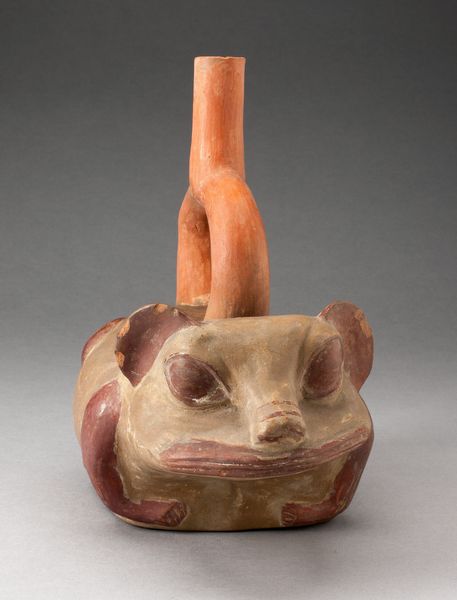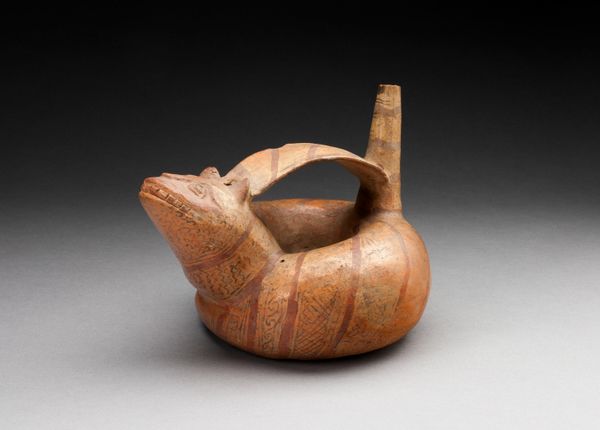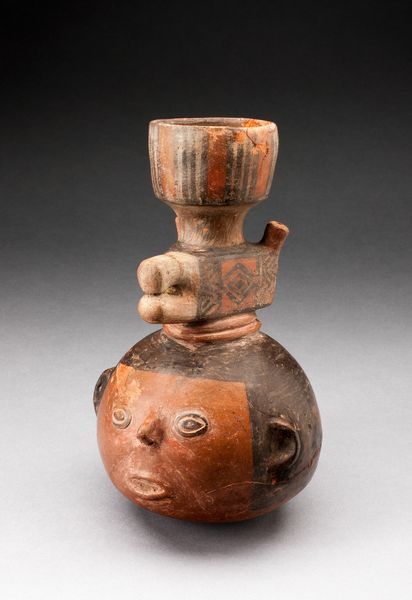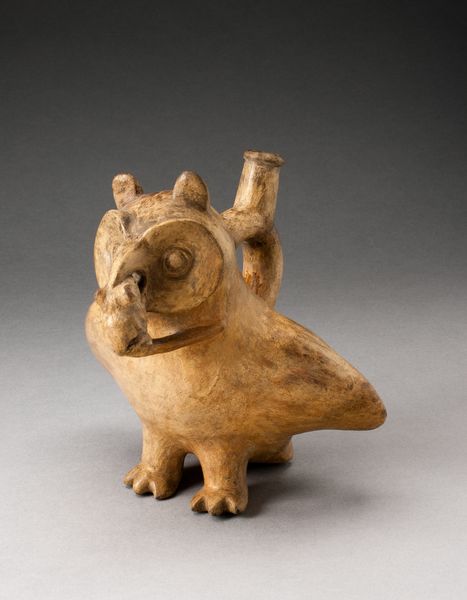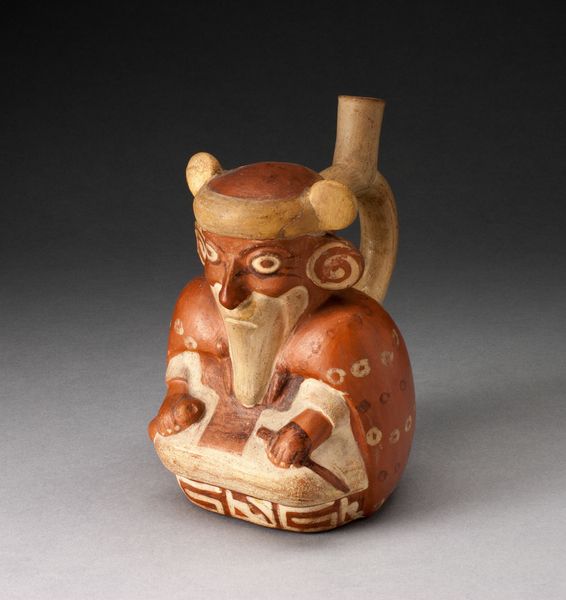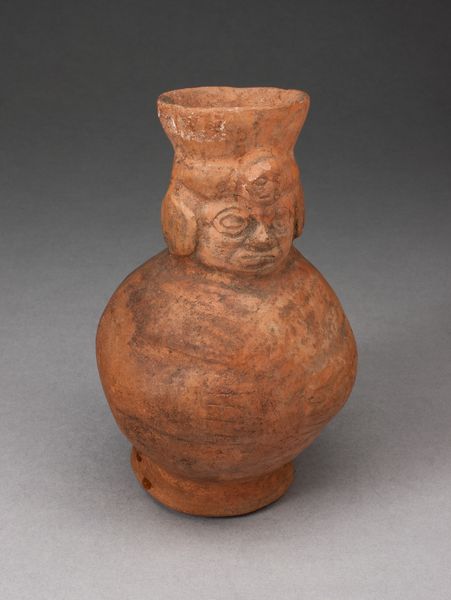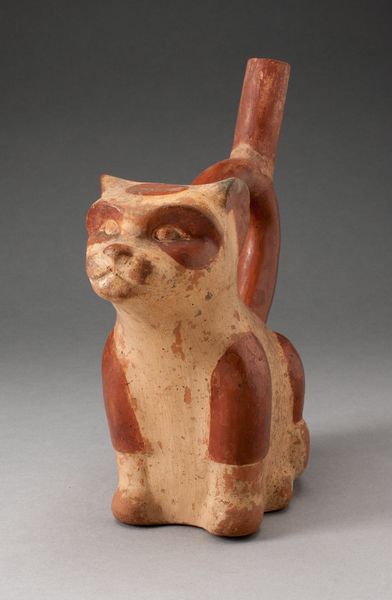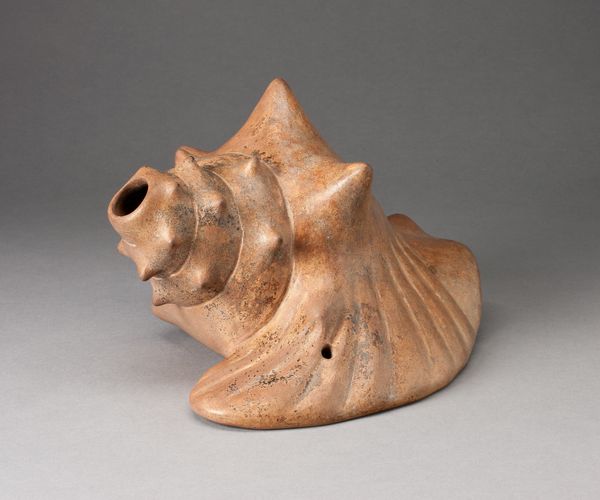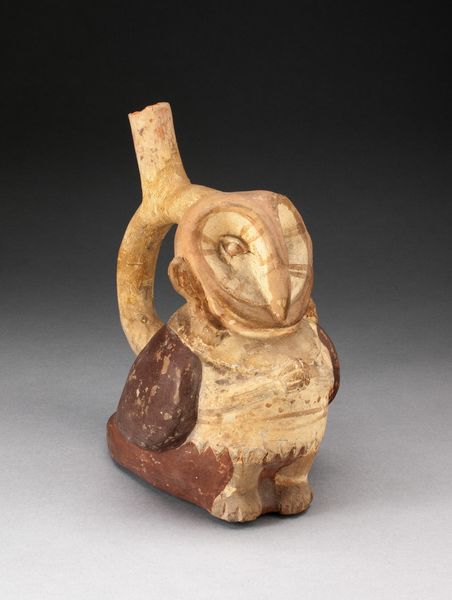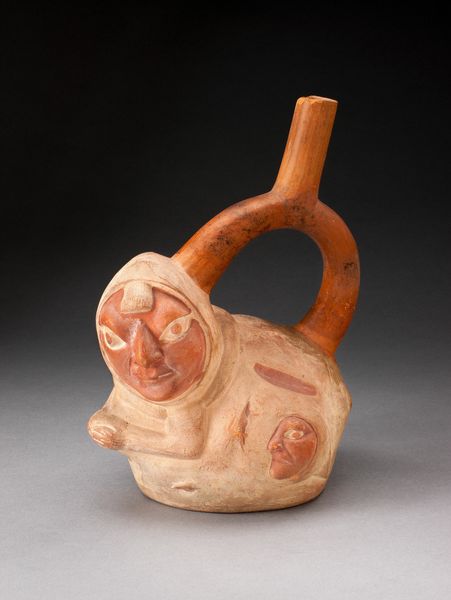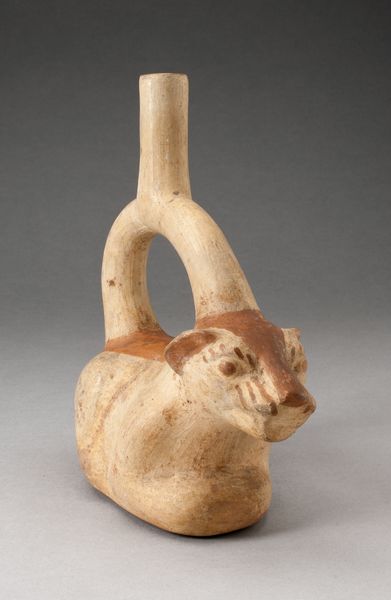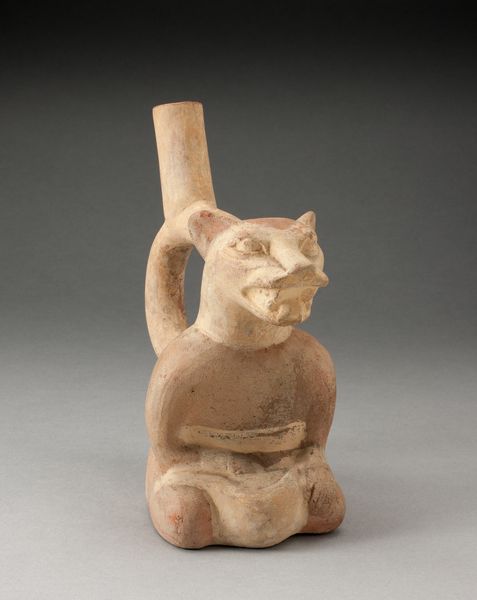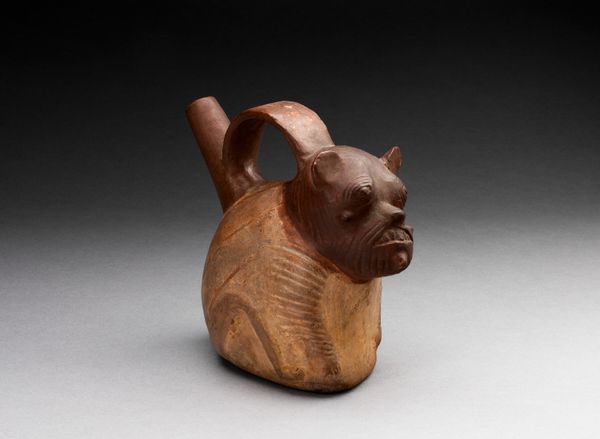
Flat-Sided Jar with Relief of Rodent Head Attached to the Vessel's Neck c. 100 - 500
0:00
0:00
ceramic, sculpture, terracotta
#
sculpture
#
ceramic
#
figuration
#
form
#
sculpture
#
terracotta
#
indigenous-americas
Dimensions: H. 17 cm (6 11/16 in.)
Copyright: Public Domain
This earthenware jar with a rodent head was created by the Moche people of ancient Peru. The Moche flourished between the first and eighth centuries, in a series of river valleys along the arid Pacific coast. Moche society was highly stratified, with powerful rulers, priests, warriors, and craft specialists. The Moche are renowned for their sophisticated ceramics, which include both utilitarian vessels and elaborate ritual objects. The rat was often used in Moche art, but what did it mean to them? Rats are highly adaptable creatures that can thrive in various environments. In Moche society, the rat may have been a symbol of resilience, resourcefulness, or even social disruption. The formal qualities of this jar—its shape, size, and decoration—offer clues to its original function. Art historians and archaeologists study objects like this alongside a range of sources, from colonial-era chronicles to the latest scientific analysis, to learn more about the beliefs and practices of this fascinating culture.
Comments
No comments
Be the first to comment and join the conversation on the ultimate creative platform.
